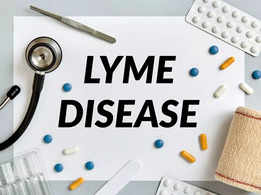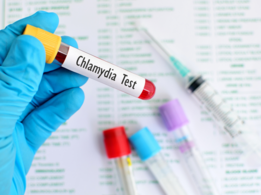01/7Prostate cancer is a common type of cancer in males

Prostate cancer is one of the leading cancers in men, with a 5-year survival rate of 64% in India alone. It commonly occurs in males aged 65 and above. However, there has been a rise in prostate cancer cases among the younger population in recent times.
Experts warn against delay in diagnosis and treatment, given that it can prove fatal and untreatable. Most often , the symptoms of prostate cancer are either ignored or neglected, leading to advanced stages of the cancer. That said, take a note of all the early signs of prostate cancer and do not mistake it for a benign illness.
Also read: How much should you WALK to reduce your risk of heart disease? Here's what study tells us
02/7What is prostate cancer?


Prostate cancer is a life-threatening condition that occurs in the prostate, which is a small walnut-shaped gland in males, which helps produce seminal fluid that nourishes and transports sperm.
According to American Cancer Society (ACS), prostate cancer begins when cells in the prostate gland start to grow out of control.
Types of prostate cancer include:
- Small cell carcinomas
- Neuroendocrine tumors (other than small cell carcinomas)
- Transitional cell carcinomas
- Sarcomas
Most prevalent from of prostate cancer is adenocarcinoma.
03/7Most common signs of prostate cancer to note; might be mistaken with other illness


Given that the prostate gland is situated close to the bladder and the urethra, there is a high chance one may experience a range of urinary symptoms among others. This is common during the early stages of the cancer and depends on the size and location of the tumour. Some of the signs may include:
- Trouble or difficulty in urination
- Burning, pain or discomfort during urination
- Frequent urination at night
- Blood in the urine
- Blood in semen
- Loss of bladder control
- Erectile dysfunction (ED)
- Painful ejaculation
04/7What happens when the cancer spreads outside of the prostate gland


In many cases, due to delayed diagnosis and treatment, the cancer may spread outside the prostate gland to other parts of the body, including the bones and the lymph nodes, causing more severe complications.
That said, signs of advanced or metastatic prostate cancer include:
- Swelling in legs or pelvic region
- Numbness or pain in the hips, legs or feet
- Bone pain that persists or leads to fractures
05/7Who is at greater risk?


causes prostate cancer. However, doctors know that prostate cancer begins when cells in the prostate develop changes in their DNA, says the health body.
The abnormal cells are what form a tumor that spreads and attacks the nearby tissues.
But while causes of this condition are not fully known, there are certain factors that can indicate who is more at risk of the cancer.
Old age, a family history of cancer and obesity are some of the risk factors of prostate cancer. Your unhealthy lifestyle habits are also to blame. Experts believe choosing a healthy diet full of fruits and vegetables, regular exercise and maintaining a healthy weight can reduce your risk of prostate cancer.
06/7Do not ignore signs of recurrent prostate cancer


Prostate cancer can also be recurrent, that means it can return after treatment. When it occurs again around the prostate, it is known as local recurrence. If it has spread to other parts, it is considered metastatic.
That said, the first sign of recurrent prostate cancer may be a rise in the Prostate-Specific Antigen (PSA) level.
Other symptoms include: Blood in urine, difficulty in urination, fatigue, lower back ache, jaundice.
If you have battled prostate cancer, continue going for screenings.
07/7What are the test options available?


According to the American Cancer Society (ACS), these groups of people should get themselves tested for prostate cancer.
- Men aged 50 or older who have an average risk of prostate cancer and a life expectancy of at least 10 more years
- Men aged 45 or older with a high risk, including African-American men and those with a first-degree relative (brother or father) who had prostate cancer before age 65
- Men aged 40 or older who have a higher risk, such as more than one first-degree relative diagnosed with prostate cancer at an early age
The Mayo Clinic recommends getting a digital rectal exam (DRE) or a prostate-specific antigen (PSA) test to diagnose whether or not you have prostate cancer.
You can also get an ultrasound, an MRI or undergo a prostate biopsy, where they will collect a tissue sample from your prostate.























































































closecomments
SIGN IN WITH
FacebookGoogleEmail